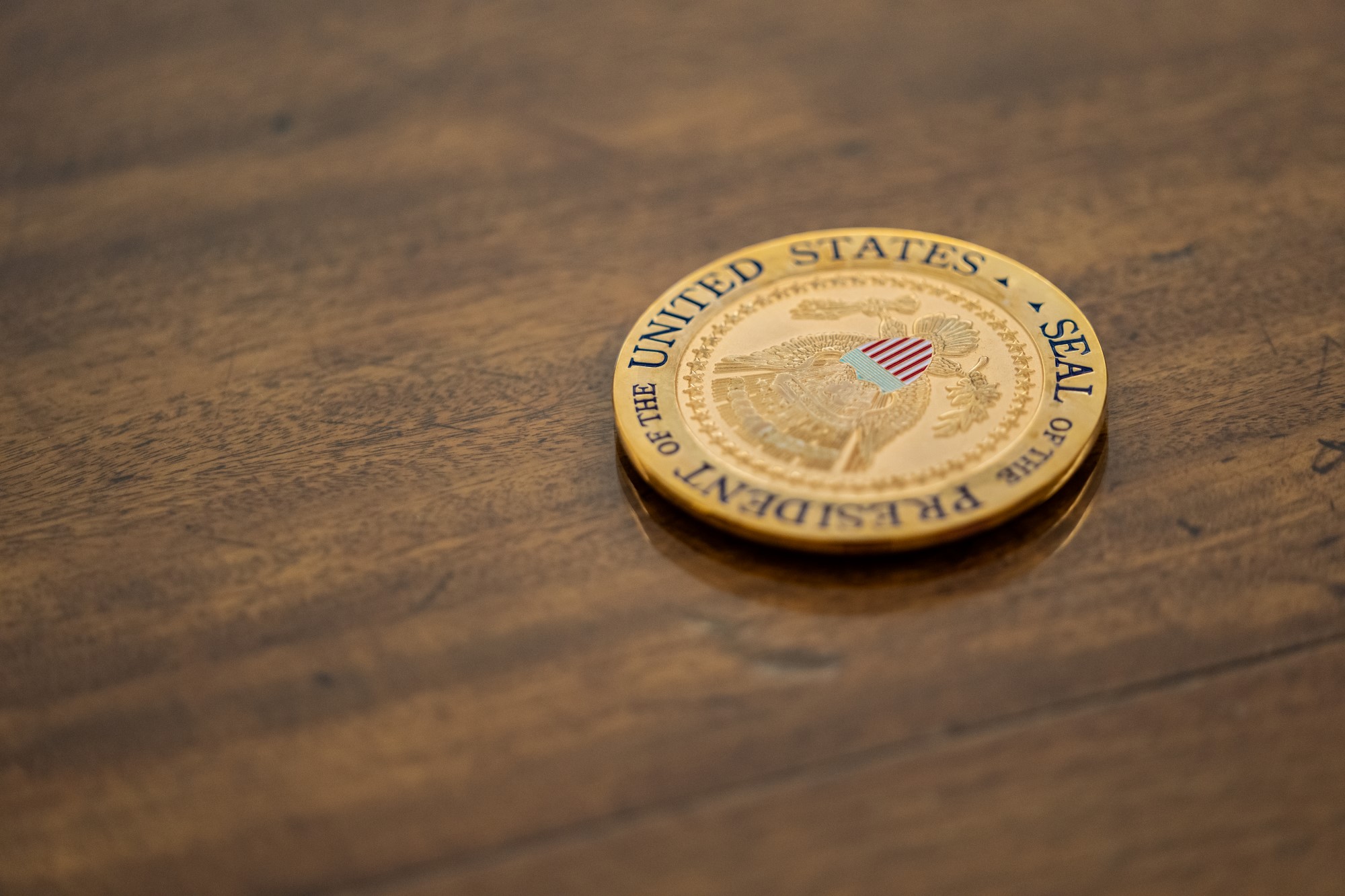What Democracy Looks Like

For many, the Women’s March on Washington began without climax. There was no unified call to action, no inspiring speech heard by all. Instead, the march began much as it had developed – somewhat haphazardly, brought on by the size of the crowd itself rather than unified action.
At first, the march’s organization seemed promising. As masses of demonstrators emerged from the surrounding metro stations, volunteers steered them towards less crowded entrances to the staging ground, their excitement boosting the surrounding crowd. Yet such optimism was not to last; overwhelmed by a crowd double their projections, the organizers had too few volunteers and too little infrastructure to communicate with anyone beyond the immediate area of the stage, leaving much of the protester-filled Mall to its own devices.
Cut off from any information from the organizers, the crowd took on its own governance. The thin rivulets of people trickling from one area to another gained momentum, becoming a slow, lurching march that headed westward down the National Mall. Back at the staging area, the speeches continued, the organizers assuring what remained of the surrounding crowd that they would march later in the afternoon. Yet there was no stopping most of the march, which had already begun the inexorable move towards the Washington Monument.
For a moment, the march came to a stop outside the National Museum of African American History and Culture, where barriers from Friday’s inauguration halted the crowd’s advance. Soon enough, though, the protesters circumvented the fences and split into two different demonstrations, one heading towards the White House and the other spilling into downtown Washington. There, the protests continued well into the evening, as the crowd spread through the streets in a mass of incomprehensible scale and seemingly without end.
Despite the enormity and discord of the protest, a sense of unity took root on the crowded Mall. Demonstrators complimented each other on their protest paraphernalia – refashioned Gadsden flags with a uterus instead of a serpent, constellations of aluminum foil origami cranes fixed to a backpack in a Calder-esque display, conspicuously orange-skinned voodoo puppets. Strangers helped each other climb to the top of parked delivery trucks and leftover scaffolding to get a better view of the crowd. Protests chants echoed in waves through the crowds, spreading outward from their sources on the voices of thousands. It stood testament to the value of finding solidarity in the chaotic, one that was felt throughout inauguration weekend.
Above all, it was one chant that became a defining refrain: “This is what democracy looks like.” It sounded not only throughout the Women’s March, but also rose from the restive protests the day before, as Black Lives Matter demonstrators and anti-fascist forces disrupted the inauguration festivities through human barricades and confrontations with police. The approaches of each protest differed wildly, as elderly women in pink pussy hats commingled with masked anarchists on metro platforms between events. Yet they all defined their embrace of protest as a fundamental defense of a democracy under threat.
That these movements represent a turn in the practice of American democracy is difficult to deny. Yet what will the implications of such a turn towards be? What will it mean for the America to come, if this is what democracy looks like?

A diffuse tension seemed to permeate the U.S. capital in the days before the inauguration. It settled like a thin fog – largely intangible, a light tingle on the skin collecting in the dips and hollows of Washington’s public spaces. But on the National Mall, land that was once partially claimed by swamp, this tension felt thick in the air. The day before the inauguration, streets surrounding the Mall were closed off from vehicle traffic, allowing the city’s visitors to wander the boulevards in what felt like an apocalyptic daze. The Mall itself was unseasonably quiet, given the events to come; the only sound to be heard was the echo of a practicing choir in the Capitol stands, pierced now and again by the sirens of passing police convoys.
It was not difficult to tell why many of the passersby had come to the Mall that day. The infamous trucker cap was omnipresent, the variations in design of particular note. They came in a number of colors, camouflage and navy blue to complement the standard red. Some were emblazoned with the official seal of the inauguration on the side, others with the date and circumstances of the occasion. One younger boy, dressed in a button-down white shirt and slacks, sported a cap with what appeared to be a genuine Trump signature in faded Sharpie on the brim. Other hats were more subdued, simply emblazoned with American flags or patriotic slogans that nonetheless betrayed the leanings of the wearers. Only those of certain politics could display their patriotism on such a day.
Despite the circumstances, the crowds were fairly muted. Many did little to display their political leanings, gazing up at the government buildings that now answered to their candidate and photographing themselves in front of the Capitol. There were those, too, who wore no inauguration gear and passed by silently, avoiding the crowds who gathered around the few vocal supporters just outside the Capitol. One jogger broke the uneasy peace, confronting a man in a t-shirt that read, “Blacks make racial slurs & commit hate crimes too!!”
“You’re on the wrong side of history,” he yelled, before turning and jogging away down an empty boulevard. The other silent passersby kept moving, leaving unclear whether they had come to celebrate or to mourn.

Confrontations like that between the jogger and the man with the t-shirt were echoed throughout the following days, as Trump supporters found themselves sharing security checkpoints and metro platforms with protesters viscerally opposed to their candidate. They spoke to each other through hostile glances and middle fingers, a surreal back-and-forth of choreographed rage. At times, the exchange took on a measure of absurdity; at a Black Lives Matter protest, where activists used a human chain to close down a security checkpoint, one Trump supporter pushed his way to the center of the crowd and began to spin around giddily, taunting the protesters by yelling his candidate’s name with both middle fingers aloft.
Rarely, though, did the exchanges escalate into violence. Many of the protests included legal observers from the National Lawyer’s Guild and trained conflict de-escalators, the latter of whom placed themselves between feuding individuals to prevent punches from being thrown. This measure was largely successful at the Black Lives Matter protest; though tensions ran high, violent confrontations were limited to a few small scuffles. In fact, much of the violence that did occur stemmed from angry Trump supporters, who frequently tried to shove their way through the human chain and, at one point, attacked a protester.

Elsewhere, however, violence became a central means of protest. On Thursday, individuals associated with the “Black Bloc” of anti-fascist protesters attended a demonstration outside the National Press Club, where members of the alt-right were holding a celebratory ball. Wearing black and covering their faces with bandanas and ski masks, the group employed escalatory tactics, at one point stealing and trying to smash a stolen riot officer helmet before throwing it back at police. Several members of the group also bloodied a Trump supporter and dragged him away from media cameras as he asserted that those opposed to the President, rather than his supporters, were acting violently. Onlookers, including parody presidential candidate Vermin Supreme, tried to de-escalate the situation and shift the narrative away from violence, but the damage had already been done.
The violence employed by Black Bloc activists came to a crescendo on Friday, when members of the coalition smashed windows of businesses and set a nearby limousine on fire. The resulting crackdown left Washington’s Franklin Square a chaotic mass of riot police, protesters burning trash cans and passersby who climbed trees to get a view on the chaos. By evening, the police had cornered the remaining Black Bloc protesters, who unsuccessfully tried to break through their lines and were then arrested en masse in a move some have argued violated their constitutional rights.
As Black Bloc protesters were led away in zip ties, the momentum that had surged through Franklin Square began to wane. Many still lingered in the square, burning trash and aimlessly circling between the police blockades. The police took the opportunity to lower their guard, some retreating from the front lines to eat a hasty dinner. At first glance, it certainly looked like a protest, the imagery no less stark than that of Zucotti Park and Ferguson. Yet it was as if both sides had fallen into a lull, taking up the standard tropes of a protest – that of the police officer, riot shield in hand, and of the demonstrator holding the line, even if it was unclear why the line was being held in the first place.
For a time, it was a gathering that seemingly existed solely on the remaining energy from the chaos that preceded it. Soon enough, the crowds dissipated, leaving the park a collection of discarded signs and burnt husks of trash bins. Chaos, the force that initially propelled the protest, had become an end in itself, obfuscating the politics it was meant to address.

The dangers posed by chaos were not simply the purview of violent protests. Its presence was felt at all the demonstrations surrounding Trump’s inauguration, lingering in heated arguments surrounded by news media and brooding masked protesters standing among the demonstrations. At times it came to the fore and was quickly subdued, though the danger of it spinning a protest out of control never fully dissipated.
Deciding whether to embrace or avoid chaos is not a new problem for protesters. Indeed, the politics of protest depend largely on disruptive elements, a fact that solidifies chaos’ role as a key protest tactic. Yet, if allowed to become an end in itself, chaos can overshadow, or even undermine, the principles for which it is justified. Finding a balance between the two is not a simple question of violence or nonviolence, but an evaluation of how chaos affects the principles undergirding both types of movements. And given the threats embodied by a Trump administration, such an evaluation must be foremost on activists’ minds.

Two days after the Women’s March, protesters were still filtering out of the city through Ronald Reagan National Airport. The southern tip of a nor’easter was passing through the area, and the gates of the airport were crowded with travelers waiting for grounded flights. Amidst the clamor of passengers rerouting their journeys, two voices rose above the din. Quietly at first, then growing louder, an unseen pair of female voices began to chant, “This is what democracy looks like.” They repeated the chant several times, each time drawing loud cheers from supporters and confused stares from everyone else.
Their show of solidarity in a locale utterly devoid of activist energy was inspiring. It suggested that, after what had happened that tumultuous weekend, it would not be the last of its kind. Yet the phrase also demanded reflection on how this legacy of protest will affect the country in the years to come.
Our democracy has never been a neat and tidy affair. Yet the protests surrounding Trump’s inauguration suggest that, like it or not, chaos has assumed a defining role in our governance. Trump and his allies have already made this clear, distorting facts and gaslighting the country in a disorienting rejection of reality. So too will chaos prove useful for protesters opposing Trump, helping slow the machinery of business as usual through disobedience, both civil and violent.
Balancing this chaos, though, will become the defining struggle of a new age of protest. Chaos can empower and bring unity, especially when used to specific ends and with principled consideration. It can also feed a climate of directionless outrage, paralyzing a movement under the guise of resistance for the sake of discord alone. Avoiding the latter will be the key task for those looking to utilize chaos in a principled and targeted manner. And if the opposition to Trump is to be successful, activists must skirt this boundary with utmost care.
Click here to see the rest of Conner Gordon’s photos from the inauguration.




